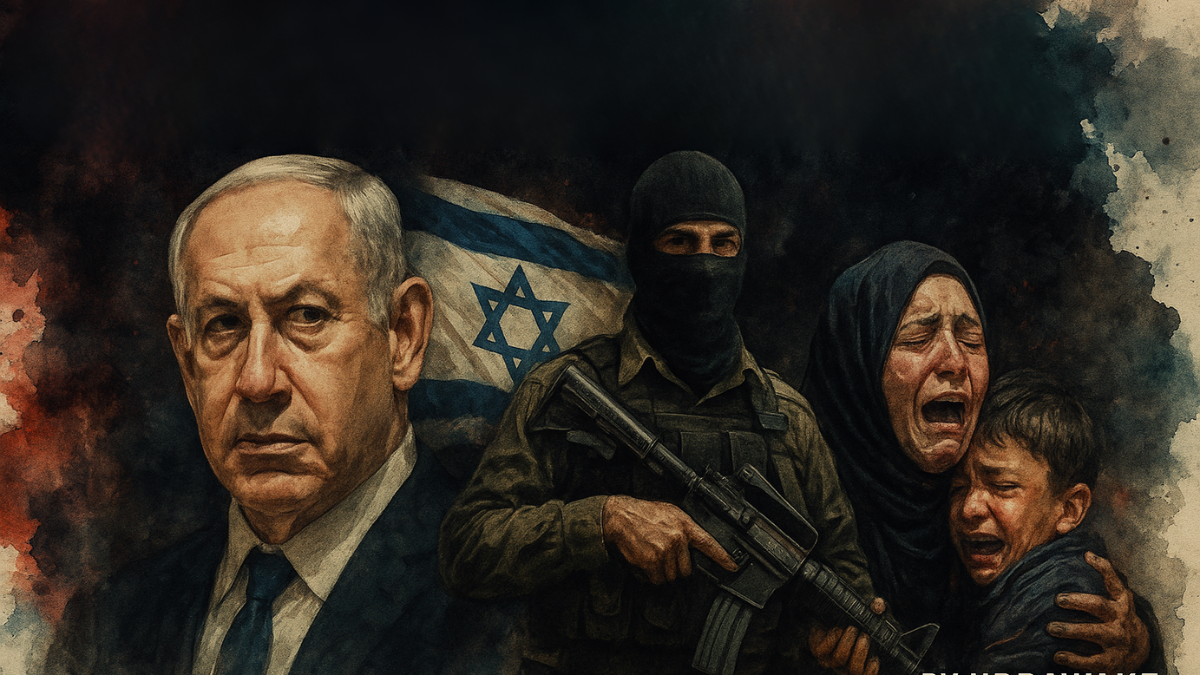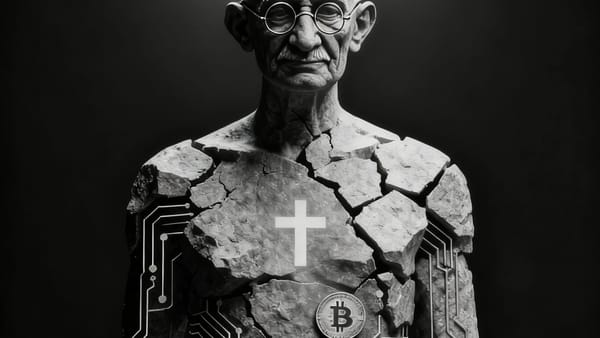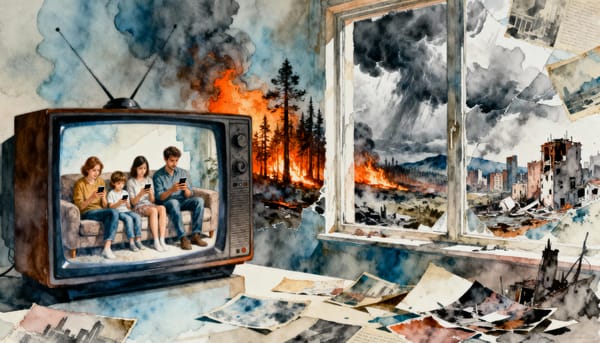La ultraderecha israelí y la guerra que no quiere terminar
Un análisis directo y documentado sobre cómo la ultraderecha israelí ha convertido el conflicto con Palestina en una herramienta de poder. Entre la ocupación permanente, el miedo como narrativa y una guerra sin fin que beneficia a los mismos de siempre.


INTRODUCCIÓN
Este artículo no nace del odio. No responde a ninguna ideología religiosa ni a un posicionamiento político ciego. Mucho menos a ningún tipo de antisemitismo. Lo que aquí se plantea es una crítica directa —y necesaria— a la hoja de ruta que está siguiendo la ultraderecha israelí: una estrategia que, lejos de buscar la paz, ha hecho del conflicto permanente su fuente de poder y legitimidad.
Porque una cosa es el derecho a existir de un Estado. Y otra muy distinta, es usar ese derecho como escudo para justificar el desplazamiento sistemático de un pueblo, la censura del disenso interno y el chantaje emocional a quien se atreva a cuestionarlo.
Aquí no se juzga a un pueblo. Se analiza una narrativa. Y se desarma, punto por punto, una maquinaria política que ha encontrado en la guerra su negocio más rentable.
1. La estrategia del enemigo permanente
Desde hace años, la ultraderecha israelí ha convertido a los palestinos en el enemigo útil perfecto. Un enemigo que nunca desaparece, siempre está latente, y sirve como excusa para todo: blindar el poder político, justificar ofensivas militares, frenar el descontento social y polarizar a la opinión pública.
La narrativa es simple pero efectiva: “nos quieren destruir”, “vivimos rodeados de amenazas”, “el mundo no nos entiende”. Y con eso, cualquier crítica se convierte en traición, y cualquier medida autoritaria se vende como defensa nacional.
El miedo, bien gestionado, es más eficaz que cualquier argumento.
2. ¿Qué es la ultraderecha israelí y a quién representa?
La ultraderecha israelí no es un fenómeno nuevo, pero en la última década ha pasado de ser un sector radical a convertirse en el eje central del poder político. Está compuesta por una coalición de partidos nacionalistas, religiosos y ultraortodoxos que defienden una visión maximalista del Estado de Israel: fronteras bíblicas, supremacía judía, anexión de territorios palestinos y una teocracia encubierta bajo el nombre de democracia.
Su figura más visible es Benjamin Netanyahu, líder del partido Likud, que ha gobernado Israel durante más de 16 años. En sus últimos mandatos ha pactado con partidos como Religioso Sionista, Shas y Judaísmo Unido de la Torá, algunos de los cuales han sido abiertamente racistas, homófobos y contrarios al Estado de derecho.
Esta coalición representa principalmente a sectores ultraortodoxos, colonos en Cisjordania, clases medias conservadoras y militares nacionalistas. Su agenda prioriza la expansión de los asentamientos ilegales en territorios ocupados, el desmantelamiento del poder judicial independiente, la represión del activismo palestino y el silenciamiento de voces críticas. Y, sobre todo, la instrumentalización del miedo para cohesionar a la población en torno a un enemigo común.
Más que un proyecto de paz, la ultraderecha israelí ha impulsado una política de supervivencia basada en la militarización del conflicto, la victimización permanente y la narrativa del “nosotros contra el mundo”.
3. Gaza: prisión al aire libre y tablero de guerra
Gaza no es un país. No es un Estado. No es libre.
Es un territorio de apenas 365 km² donde viven más de 2 millones de personas, la mayoría descendientes de palestinos expulsados durante la Nakba de 1948. Desde 1967 hasta 2005, Gaza estuvo ocupada militarmente por Israel. En 2005, Israel se retiró unilateralmente del enclave, pero mantuvo el control del espacio aéreo, las fronteras y el acceso marítimo, en colaboración con Egipto.
Aunque existe una autoridad palestina reconocida internacionalmente, Gaza está gobernada de facto por Hamas desde 2007, tras una guerra interna con Fatah. Hamas es una organización islamista surgida en 1987 como rama palestina de los Hermanos Musulmanes. En sus inicios, algunos sectores israelíes vieron su auge como un contrapeso útil al nacionalismo laico de Fatah y la OLP, lo que favoreció su expansión.
En 2006, Hamas ganó las elecciones legislativas palestinas —las últimas celebradas— en un contexto de desgaste de Fatah. El proceso fue supervisado por observadores internacionales y considerado válido, aunque se desarrolló en un clima de tensión. La posterior ruptura con Fatah derivó en la toma del poder por parte de Hamas en Gaza.
Desde entonces, Hamas ha lanzado cohetes contra Israel y ha sido blanco de repetidas ofensivas militares. No obstante, las relaciones son más complejas. Israel ha permitido transferencias de fondos desde Catar hacia Gaza para mantener cierto control de la situación humanitaria. Ha tolerado el control de Hamas como un freno a la influencia de Fatah. Y ha instrumentalizado la existencia de Hamas como justificación para evitar cualquier proceso de paz real.
Mientras tanto, la población civil vive atrapada en una situación insostenible: sin libertad ni refugio. Sin horizonte.

4. El canal Ben Gurión y la geopolítica del caos
Detrás del humo, a veces también hay mapas.
Entre los muchos factores geopolíticos que rodean el conflicto, algunos analistas han recordado la existencia de un antiguo proyecto conocido como el Canal Ben Gurión: una propuesta para conectar el Mar Rojo con el Mediterráneo a través del desierto del Néguev, como alternativa estratégica al Canal de Suez.
Aunque el proyecto ha sido discutido desde hace décadas y sigue sin materializarse, su trazado atraviesa áreas sensibles del sur israelí, cercanas a la Franja de Gaza. Esto ha dado pie a hipótesis que vinculan intereses económicos y logísticos con decisiones militares recientes, especialmente en torno a la zona de Rafah y el corredor de Filadelfia.
Es importante subrayar que no hay evidencia directa de que este canal sea la causa de las ofensivas, pero tampoco se puede ignorar que los conflictos armados a menudo reconfiguran territorios de manera funcional a intereses más amplios.
Más allá de las hipótesis, lo que queda claro es que las guerras casi nunca son puramente ideológicas o religiosas. El control territorial, los recursos y las rutas estratégicas siguen siendo factores clave. Y, como tantas veces en la historia, quienes pagan el precio más alto son las poblaciones civiles atrapadas en medio de todo.
5. El 7 de octubre de 2023: ¿ataque sorpresa o jugada política?
El 7 de octubre de 2023, Hamas lanzó el ataque más brutal en la historia reciente de Israel. Murieron más de 1.200 personas. El sistema de defensa falló. El shock fue total. Resulta especialmente llamativo que un país considerado entre los más protegidos del mundo, con una de las agencias de inteligencia más avanzadas —el Mossad—, no supiera anticiparse ni reaccionar a tiempo ante un ataque de esta magnitud. Israel cuenta con cámaras de vigilancia, drones, sensores y puestos militares a lo largo de toda la frontera con Gaza. Y aun así, los milicianos de Hamas lograron penetrar con excavadoras, a pie y por aire, atravesando una de las zonas más monitoreadas del planeta sin encontrar resistencia inmediata. Se sabe, además, que el ataque coincidió con un día festivo —Simjat Torá— y con el Shabat, lo que redujo la alerta operativa. Medios como Haaretz y The New York Times han informado que algunos analistas de inteligencia israelíes advirtieron previamente sobre maniobras sospechosas por parte de Hamas, pero sus alertas fueron ignoradas o minimizadas por los altos mandos. El documento interno conocido como “Murallas de Jericó”, que anticipaba un posible ataque a gran escala, fue desestimado por considerarse irrealista. Todo esto alimenta las preguntas sobre cómo pudo producirse una brecha de seguridad tan profunda en uno de los perímetros más vigilados del mundo.
El país atravesaba una crisis institucional profunda. Las calles se llenaban de protestas masivas contra una reforma judicial impulsada por el gobierno de Netanyahu, percibida por amplios sectores como una amenaza a la democracia. La legitimidad del ejecutivo se tambaleaba. Incluso dentro del ejército, el malestar era palpable. Netanyahu, que enfrentaba una presión interna sin precedentes, recuperó su papel como líder de una nación en guerra.
En medio de ese cambio de clima, surgieron datos inquietantes: un estudio preliminar difundido por investigadores de la Universidad de Columbia —aún en formato preprint, es decir, sin revisión académica formal— alertó sobre movimientos bursátiles anómalos registrados días antes del ataque. Se detectaron inversiones millonarias apostando a la caída del mercado israelí, que luego generaron beneficios sustanciales. A pesar de la gravedad de los indicios, ninguna autoridad financiera o judicial ha iniciado una investigación. La falta de voluntad política y el contexto de guerra han dejado este asunto fuera del foco institucional, alimentando aún más las preguntas no respondidas.
Tampoco hay respuestas claras sobre las expectativas de Hamas. ¿Creyeron que un ataque masivo podría generar un levantamiento popular? ¿Una victoria táctica? Lo cierto es que el resultado fue devastador: una respuesta militar implacable por parte de Israel, el aislamiento casi total del pueblo gazatí, y la consolidación del relato belicista en la política israelí.
El ataque fue atroz, injustificable y trágico. Pero también fue un error estratégico por parte de Hamas, que no solo no logró sus objetivos, sino que agravó la situación de su propio pueblo. Y si en algún nivel del poder israelí se intuía lo que iba a ocurrir y no se evitó, entonces la población civil de Gaza fue —una vez más— sacrificada por decisiones irresponsables de ambos lados, aunque el coste ha sido brutalmente asimétrico.
6. ¿Conflicto o castigo perpetuo?
No es una guerra entre iguales. Israel tiene el ejército más sofisticado de Oriente Medio. Tiene armas nucleares. Tiene alianzas con las potencias. Palestina no tiene ni soberanía.
Desde 1948, el conflicto ha provocado la muerte de más de 100.000 palestinos y alrededor de 10.000 israelíes. ⚠️ Estas cifras pueden variar ligeramente según las fuentes (B'Tselem, Human Rights Watch, OCHA-ONU, Ministerio de Salud palestino, ejército israelí, etc.). Según organismos internacionales, por cada persona israelí fallecida en el conflicto desde 1948, han muerto al menos diez palestinos. Esta desproporción refleja una asimetría estructural en el número de víctimas que pone en evidencia la desigualdad de medios, poder y consecuencias entre ambos bandos.
Solo entre 2023 y mediados de 2025, más de 35.000 gazatíes han muerto, 2 millones han sido desplazados, hospitales han sido destruidos y barrios enteros borrados del mapa. En ese mismo periodo, murieron alrededor de 90 israelíes, la mayoría durante el ataque inicial del 7 de octubre o en represalias puntuales.
Esto no es defensa. Es castigo sistemático. Una maquinaria que necesita al enemigo para seguir funcionando. Y un mundo que actúa como si hubiera vidas que valen más que otras.
7. Cuando la memoria se convierte en escudo, y la fe en arma
La ultraderecha israelí ha convertido el trauma en poder. Su relato oficial combina victimismo histórico, supremacía tecnológica y una fe nacionalista que lo justifica todo. Y el mundo —por miedo, por culpa o por interés— le compra ese relato.
Pero el dolor no da derecho a causar más dolor. Y la religión, cuando se vuelve arma, no libera: oprime.
Esto no es solo un conflicto territorial. Es también una guerra contra la igualdad. Contra el derecho de otro pueblo a existir sin arrodillarse.
Y lo más obsceno es que todo esto se sostiene con discursos supuestamente “morales”: con la excusa de la autodefensa, con la narrativa del “pueblo elegido”, con la deshumanización absoluta del otro.
Y mientras Gaza sangra, el mundo guarda silencio. No por ignorancia. Sino por complicidad.
La ultraderecha israelí representa hoy una de las expresiones más radicales del actual neoliberalismo autoritario sustentado en dogmas religiosos y lógicas de control.
🌀 ¿Te removió este texto?
Aquí no vendemos humo. Te mostramos el incendio.
Y si este tema te hizo pensar, quizá te interesen también:
🔸 Narrar para dominar: el poder de las historias
No necesitas un ejército para controlar el mundo. Solo una buena historia.
🔸 La corrupción no rompe el sistema: lo hace funcionar
No es una anomalía. Es parte del diseño.
📬 ÚNETE A LA RESISTENCIA LÚCIDA
URBAWAKE no se sostiene con anuncios ni patrocinadores.
Se sostiene con personas que quieren otra forma de contar —y de entender— el mundo.
Suscríbete y forma parte de una comunidad que está creciendo para pensar y resistir juntos.





